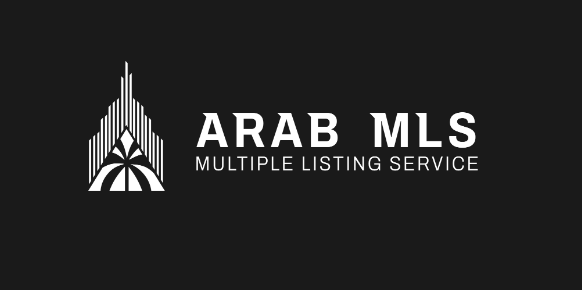The real estate market is fast-paced, competitive, and often overwhelming, especially for homebuyers. Many buyers juggle multiple property options, trying to narrow down choices that align with their personal preferences, family needs, and financial capabilities. In this environment, having a tool to simplify and organize their search can significantly enhance the home-buying experience. One such tool is the Buyer Wishlist.
A wishlist feature in a Multiple Listing Service (MLS) portal can offer an array of advantages for both buyers and real estate agents. It allows buyers to track their favorite properties, compare them, and prioritize options. For real estate professionals, it presents an opportunity to better understand client preferences and tailor recommendations. In this article, we’ll explore how integrating Buyer Wishlists into MLS portals can revolutionize the way homebuyers interact with listings, the benefits it offers, and the challenges that come with implementing this feature.
What is a Buyer Wishlist in MLS?
A Buyer Wishlist in an MLS portal is essentially a personal collection of properties that a buyer is interested in. It’s akin to creating a shopping cart in e-commerce or bookmarking websites for future reference. The wishlist allows buyers to:
- Save properties they want to revisit later.
- Organize favorites into categories or labels for better clarity (e.g., “Top Picks” or “Must-See”).
- Add notes or comments to properties, such as reminders to check for specific features (e.g., “verify parking availability” or “check school ratings”).
- Track property status, such as when properties are marked as under contract, sold, or price changes.
For real estate agents, the wishlist provides an invaluable tool to gauge buyer preferences and streamline the search process. It can offer agents insight into the types of homes that resonate with their clients, enabling them to offer more tailored recommendations and improve overall service quality.
Benefits of Creating Buyer Wishlists in MLS Portals
1. Streamlined Search Experience for Buyers
The real estate search process can be overwhelming, with buyers potentially browsing through hundreds of listings. A wishlist feature allows buyers to keep track of their favorite properties easily, creating a more organized experience. By simply adding a listing to the wishlist, they can revisit it at any time, compare different options side by side, and prioritize the properties that best meet their needs.
Additionally, the ability to categorize and label different properties helps buyers identify their preferences clearly, which can reduce confusion and decision fatigue. This ensures that no property is overlooked or forgotten in the decision-making process.
2. Enhanced Communication Between Buyers and Agents
When a buyer creates a wishlist, it opens up a new line of communication between them and their real estate agent. The agent can access the wishlist to understand which properties are catching the buyer’s interest. This insight allows agents to:
- Refine recommendations: By analyzing a buyer’s wishlist, an agent can see which property features (e.g., number of bedrooms, proximity to schools, price range) are most important to the buyer, allowing them to suggest homes that meet those preferences.
- Monitor buyer behavior: Agents can observe whether the buyer is gravitating toward specific property types or areas. For example, if a buyer is repeatedly adding condos in a particular neighborhood, the agent can focus on similar properties and keep the buyer updated with new listings in the area.
- Collaborate more effectively: Through an MLS platform, agents can suggest additional properties directly to a buyer’s wishlist, enabling a continuous and seamless conversation.
This dynamic system can make the process of finding the perfect home much more efficient and tailored to the buyer’s preferences.
3. Save Time and Reduce Stress
House hunting can be an exhausting process, with buyers often looking at multiple properties in different neighborhoods, which can lead to confusion and frustration. The wishlist functionality acts as a central repository for all the properties a buyer is interested in, making it easier for them to stay organized.
Instead of scrolling through endless listings to find previously viewed homes, buyers can quickly access their wishlist, where all their preferred properties are saved. They can instantly compare key features, view updated status changes, and determine whether a property is still available or has been sold.
This feature can significantly reduce the time spent re-evaluating homes and offer peace of mind that no important property has been overlooked.

4. Personalized Home Search Experience
Everyone has different criteria when it comes to finding a home. Some buyers prioritize the number of bedrooms, while others focus on location or amenities. A wishlist lets buyers personalize their search and create a curated list of homes that tick the boxes that matter most to them. Whether it’s proximity to schools, access to public transport, or unique architectural styles, a wishlist allows buyers to keep track of everything that is most important to them.
Additionally, buyers can also add personal notes to properties, making it easier to keep track of specific requirements or features that are crucial for their decision. For example, a buyer could note that they need a home with a large kitchen, a fenced backyard, or a swimming pool—something that an agent can use to refine future recommendations.
5. Helping Buyers Compare Properties Effectively
One of the most difficult parts of the home-buying process is comparing different properties. Buyers often have to juggle between multiple tabs or documents to evaluate each property’s features, price, and condition. A wishlist allows them to visually compare the properties side by side, with key attributes highlighted, helping them quickly identify which homes stand out.
For agents, this is also a valuable tool. They can create customized lists of properties for clients, making it easier to compare homes that might meet their criteria. It’s a great way to facilitate decision-making collaboratively and transparently.
6. Track Property Status and Updates
Another feature of a buyer wishlist could be the ability to track a property’s status. MLS platforms can provide real-time updates regarding:
- Price changes: Buyers will receive notifications when a property they are interested in has its price reduced or increased.
- New listings or open houses: Alerts can be set up to notify buyers when similar properties come on the market or if an open house event is scheduled.
- Sold or under contract: Real-time updates on property status will help buyers stay up to date on whether a property is still available or if it’s been taken off the market.
This real-time information helps keep the home-buying process moving, ensuring buyers never miss out on an opportunity.
Challenges in Implementing Buyer Wishlists in MLS Portals
While the benefits of incorporating wishlists into MLS platforms are substantial, several challenges must be addressed during the implementation process:
1. Data Security and Privacy Concerns
As wishlists contain personal preferences and potentially sensitive data, MLS platforms need to prioritize user security and privacy. Ensuring that only authorized users (i.e., buyers and agents) have access to a buyer’s wishlist is critical to maintaining trust. Additionally, MLS platforms must comply with data protection regulations like GDPR (General Data Protection Regulation) to safeguard buyer information.
2. User Interface and Experience
For a wishlist to be truly effective, it needs to be user-friendly and seamlessly integrated into the MLS platform. The process of adding, categorizing, and sorting properties must be intuitive. Buyers should be able to easily navigate the platform to create and manage their wishlists, without getting frustrated by a cluttered or complicated interface.
A clean, accessible design with helpful search and filter tools will enhance the user experience and encourage active participation in the wishlist feature.
3. Integration with Existing MLS Systems
Integrating the wishlist functionality into an already complex MLS system requires careful planning and collaboration. The platform needs to support real-time updates, integrate with property data feeds, and be compatible with mobile and desktop versions of the portal. This could require additional resources and development time.
4. Over-Reliance on Wishlists
While wishlists can be an invaluable tool, it’s important to ensure that buyers don’t overly rely on them without engaging with the broader real estate market. For example, they may miss out on properties that don’t match their wishlist exactly but still offer excellent value. Agents should encourage buyers to stay open-minded and not be too fixated on their lists.
Conclusion
The integration of Buyer Wishlists within MLS portals can provide an essential tool that enhances the home-buying experience. For buyers, it simplifies the property search process, saves time, and offers a more personalized, organized approach. For agents, it facilitates better communication, streamlines property recommendations, and provides insights into client preferences.
However, successful implementation of this feature requires careful attention to user experience, data security, and seamless integration with existing MLS systems. If these challenges are addressed, wishlists can become a core component of MLS platforms, revolutionizing the way buyers, sellers, and agents interact with the real estate market. As homebuyers increasingly seek more tailored, efficient, and transparent ways to navigate the market, the wishlists feature represents a valuable tool that meets these needs.












